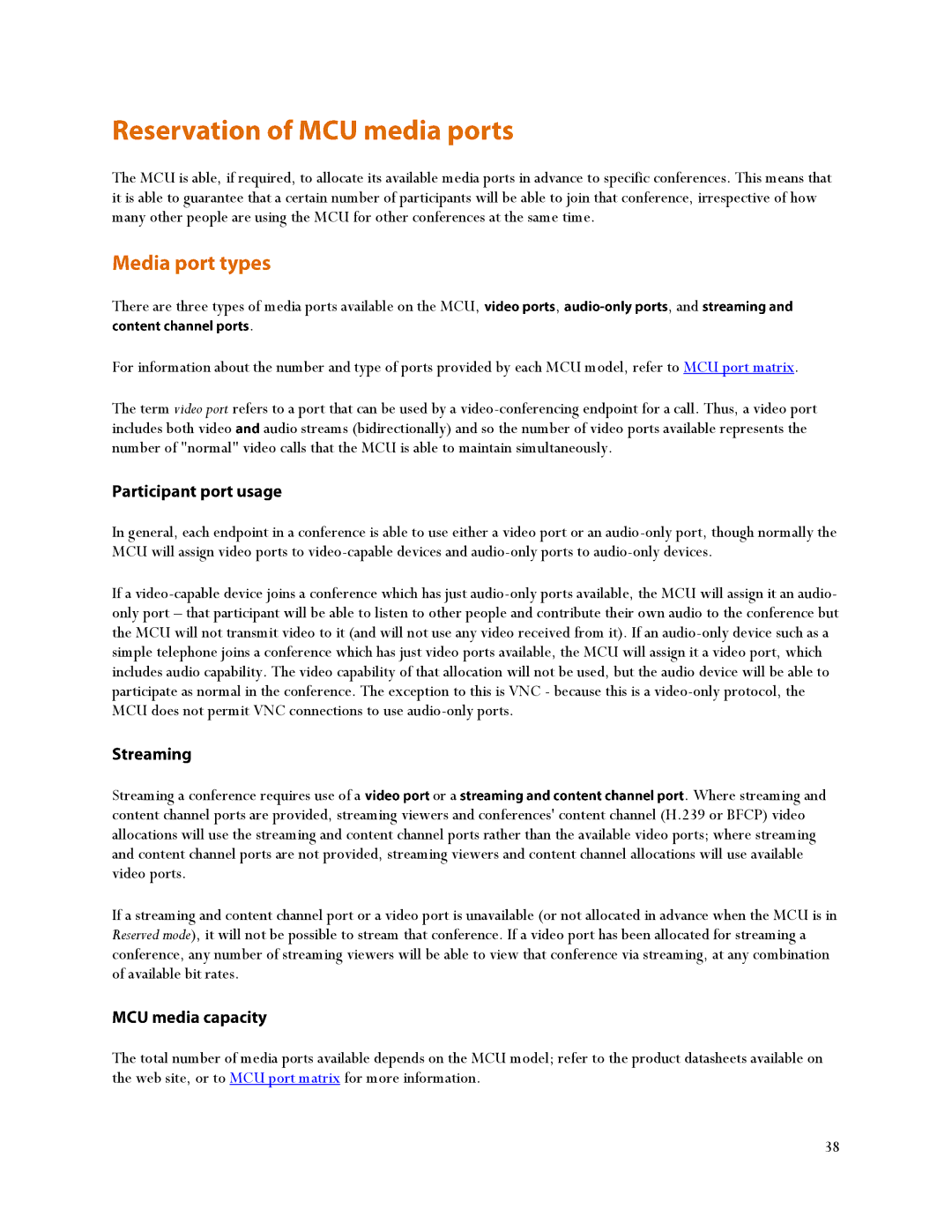
The MCU is able, if required, to allocate its available media ports in advance to specific conferences. This means that it is able to guarantee that a certain number of participants will be able to join that conference, irrespective of how many other people are using the MCU for other conferences at the same time.
There are three types of media ports available on the MCU, | , | , and |
. |
|
|
For information about the number and type of ports provided by each MCU model, refer to MCU port matrix.
The term video port refers to a port that can be used by a
includes both video audio streams (bidirectionally) and so the number of video ports available represents the number of "normal" video calls that the MCU is able to maintain simultaneously.
In general, each endpoint in a conference is able to use either a video port or an
If a
Streaming a conference requires use of aor a. Where streaming and content channel ports are provided, streaming viewers and conferences' content channel (H.239 or BFCP) video allocations will use the streaming and content channel ports rather than the available video ports; where streaming and content channel ports are not provided, streaming viewers and content channel allocations will use available video ports.
If a streaming and content channel port or a video port is unavailable (or not allocated in advance when the MCU is in Reserved mode), it will not be possible to stream that conference. If a video port has been allocated for streaming a conference, any number of streaming viewers will be able to view that conference via streaming, at any combination of available bit rates.
The total number of media ports available depends on the MCU model; refer to the product datasheets available on the web site, or to MCU port matrix for more information.
38
